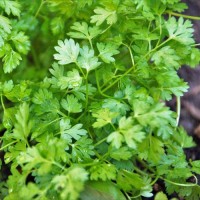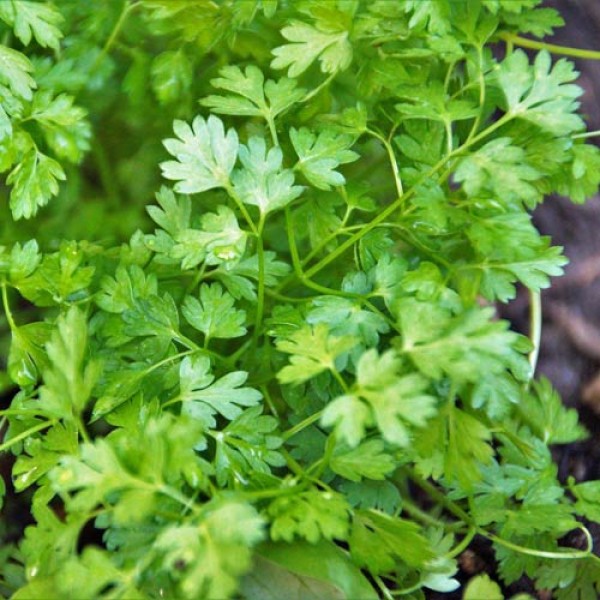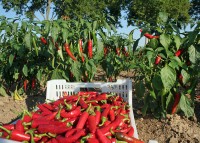Growing chervil from seed
Chervil is similar to parsley, but is a much more delicate herb with a subtle parsley flavour and slight aniseed note. It also grows naturally on shaded forest edges, from which the cultivated form has been bred as a spice. Its relative, cow parsley or wild chervil, is widely distributed in nutrient-rich meadows and is also edible. It tastes more tart than garden chervil with a slight carrot flavour. However, we would not recommend picking it in the wild as there is a risk of confusion with the poisonous hemlock.
Location
Chervil prefers a moist, loose garden soil and can stand very well in partial shade. This also prolongs the harvest time until flowering. In sunny, hot locations, chervil flowers earlier. As a low nutrient-demanding plant, chervil needs only small amounts of nutrients other than potassium. Sites with little humus are suitable for growing chervil. It is important that the soil is not too dense and loamy. Then you should loosen it a little with quartz sand or perlite.
Sowing
Chervil is suitable for growing indoors, on balconies and terraces as well as in pots on the kitchen windowsill and can also tolerate a shady spot. It is important to water sufficiently. The tender herb is very tolerant as far as the time of germination is concerned. You can sow it directly in the bed from the beginning of March to September. It is practical to sow the seeds successively, because then you can harvest chervil throughout the spring and summer. Use special herb soil for sowing. Place the seeds in shallow hollows 20x20 cm apart. Chervil is a light germinator, so only cover the seeds with a little sand only to mark them and protect them from predators.
Chervil is an annual plant and therefore reseeding is necessary every year. However, you can leave this to the chervil itself. Many elongated oval seeds are formed on large, round umbels, which can also be used in the kitchen. The herb does not like to be transplanted. Pre-cultivating the plants indoors is therefore not recommended.
Care
Chervil is very undemanding, but keep it free of weeds. Make sure that the herb is not placed in full sun, as this can cause it to flower prematurely. This is not favourable if you want to use the leaves rather than the seeds. Chervil - like most herbs - loses much of its flavour when it flowers. In dry and warm years, cut off the cones before flowering so that you can harvest more leaves.
Flowering
As is usual for umbellifers, the white flowers are also arranged in so-called double umbels. Chervil usually flowers between the end of May and the beginning of August. The small individual flowers of chervil do not form a calyx.
The fruits are schizocarps. They can grow up to one centimetre long and are light to dark brown in colour. The seeds of the chervil are always two-parted and elongated. Their shape sometimes resembles that of wild rice.
Pests and diseases
Root wilt and root rot are fungal diseases that can occur especially in cool, damp weather and waterlogging. With wilt, the roots become brown and rotten and the lateral roots die. Root rot can be recognised by a cobweb-like, white, later brown coating at the base of the stem. Preventive measures are to observe cultivation breaks of three years and to avoid waterlogging and soil compaction.
Powdery mildew with brown to black spots on leaflets and stems can also occur. This later results in yellowing and death of the leaves. As a preventive measure, ensure that the stands are loose.
Pests that can attack chervil include aphids. Helpful measures: Sow late. If necessary, use neem preparations against animal pests.
Harvest
Chervil can be harvested six to eight weeks after sprouting. Carefully cut off as many leaves as you need. The flavour of chervil is tart and aromatic, with hints of aniseed, tarragon and parsley. Chervil is not suitable for drying, as it loses its fine aroma in the process. However, this is not a problem, because if sown skilfully, chervil can be harvested fresh until autumn.















